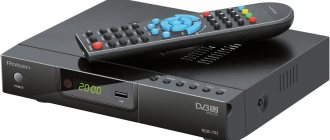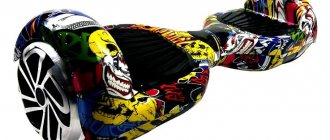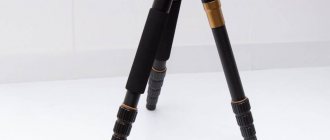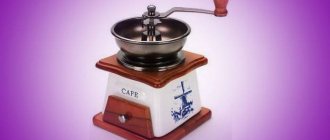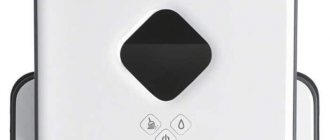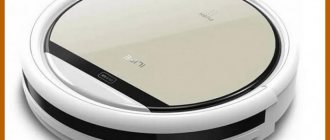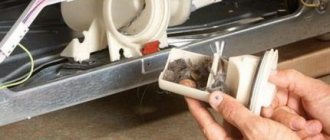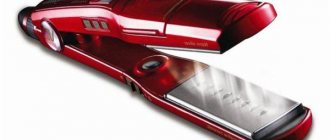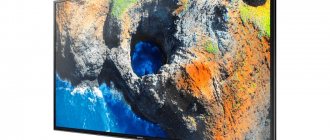High or low blood pressure is a fairly common problem. Most people, especially the elderly, need constant monitoring of blood pressure and heart rate. This is what tonometers are designed for, which can be used without problems at home. It is important to understand that blood pressure monitoring allows timely detection of serious diseases or their consequences. In addition, the doctor can get a more complete picture of the disease based on the tonometer readings.
The modern market provides a huge variety of different tonometer models for use at home. In general, tonometers can be divided into 2 types: mechanical and automatic.
Both the first and second are equally popular and in demand among the population. Automatic devices are more modern and are becoming more and more in demand every day. Mechanical blood pressure monitors are found in almost every home and medical facility.
Purpose of the device
Content:
- Purpose of the device
- Operating principle of the device
- Classification of tonometers
- Automatic blood pressure monitors
- Mechanical blood pressure monitors
- Tonometer cuff
- Rules and recommendations
The tonometer is able to detect deviations in blood pressure from the norm. It is known that normal pressure is 120 and 80 millimeters of mercury. Naturally, the norm is different for everyone and can vary within 10 units above and below the indicated numbers.
Such a device must be in every person’s home first aid kit, regardless of age. If a person suffers from hypertension, he should even more so have a blood pressure monitor at home. To avoid hypertensive crisis, such patients should have their blood pressure assessed systematically. Based on these results, the doctor can select the necessary treatment.
It is important to understand that blood pressure can increase not only due to illness, but also one-time due to increased physical activity and as a result of deterioration in general well-being. If a person often experiences dizziness, nausea, pain in the head and heart, this may indicate deviations in blood pressure readings from the norm.
Operating principle of the device
Blood pressure can be measured by two methods: Korotkoff and oscillometric. This depends on the tonometer model. The Korotkov method involves listening to the pulse using a phonendoscope. The oscillometric method involves displaying the result directly on the screen. It should be noted that in both the first and second cases the operating principle is the same.
A cuff is placed on the arm in the shoulder or wrist area - a sleeve that has a pneumatic chamber inside. Air is supplied to this sleeve, which increases its size. Thus, the arteries are compressed and blood flow is blocked. If a phonendoscope is used to measure pressure, then at this moment all sounds disappear due to the fact that blood does not flow through the veins.
The air blower is equipped with a valve that gradually releases pressure. As soon as the blood begins to circulate again, the person hears a knocking sound (pulse) through the device. In this way, the upper (systolic) blood pressure is recorded - it shows the pressure in the arteries at the moment when the heart contracts and pushes blood into the arteries. Next, the blood flow begins to increase, but after it is completely restored, the audible sound stops - this is an indicator of the lower (diastolic) blood pressure - it shows the pressure in the arteries at the moment the heart muscle relaxes. Automatic devices do not require human intervention, since the result is determined electronically.
How is blood pressure measured with a tonometer?
To measure blood pressure, it is necessary to influence large arteries - then the results will be most accurate. Therefore, pressure is measured through the brachial artery, and sometimes through the femoral artery.
Preparing for measurement
It is worth mentioning that blood pressure is never stable. Although the factors influencing pressure changes cannot be completely eliminated, they can be minimized. Thus, due to anxiety and excitement before measuring blood pressure, a person may demonstrate higher blood pressure values (especially in the doctor’s office, the so-called “white coat effect”).
Blood pressure should be measured in comfortable conditions.
Because it can be difficult to measure pressure correctly with a mechanical tonometer, the following conditions must be observed so as not to make a mistake:
- comfortable environment;
- normal air temperature;
- at least 40 minutes after meals or before meals;
- no earlier than a couple of hours after smoking, energy drinks, alcohol;
- no earlier than an hour and a half after using adrenergic agonists, which include, among other things, vasoconstrictor drops for the eyes and nose;
- necessarily after 5-10 minutes of adaptation, if the place is new for the person.
The values are also affected by the presence of pain, a full bladder, an unstable emotional state, and much more.
If you are using vasoconstrictor eye drops, your blood pressure should be measured no sooner than after 30 minutes.
Procedure
Let's look at how to measure blood pressure with a mechanical tonometer. So, the subject should relax, leaning on the back of the chair. The legs stand straight, do not rest against anything and do not cross.
- The cuff is put on in such a way that there are a few free centimeters left from the bottom to the bend of the elbow.
- When measuring pressure while sitting, the hand must be placed relaxed on a hard surface. Visually, the edge of the cuff should be approximately at the level of the projection of the heart. The arm and body should form an angle of 45 degrees.
- When measuring with a person lying down, the shoulder should also be at an angle of 45 degrees to the torso.
- To diagnose orthostatic hypotension, blood pressure is measured in a standing position one minute after moving from a horizontal to a vertical position.
- Using a pear-shaped inflator, air is quickly pumped into the cuff until the pressure on the pressure gauge is 35 mm Hg higher. Art. from the pressure when the pulsation in the bend of the elbow disappeared (listen with a stethoscope). This technique will prevent errors in measurement due to auscultation failure, and will also increase the accuracy of measurement.
A pear-shaped rubber blower is used to pump air into the tonometer cuff.
- Gently unscrew the valve, slowly reducing the pressure in the cuff.
- The appearance of tones will correspond to systolic blood pressure. This will be heard through a phonendoscope.
- Diastolic is recorded at the moment when the tones are not audible through the phonendoscope.
- Once the diastolic pressure is recorded, the cuff pressure should be rapidly reduced. To do this, you need to carefully unscrew the valve located above the supercharger.
- The pressure in the cuff decreases smoothly, but without stopping, at a speed of 3 mm Hg. Art. /sec. If tachycardia is observed, then the pressure needs to be reduced faster, but if bradycardia is observed, the pressure should be reduced more slowly.
- The results obtained are recorded with an accuracy of 2 mm Hg. Art.
The pressure measurement results will be shown by a special tonometer scale
Difficulties in measuring blood pressure
When measuring pressure, problems may arise due to existing pathologies in the subject. In such cases, you should definitely contact your doctor with a question about how to use a mechanical tonometer yourself. Below is a table of possible violations and ways to solve the problem.
| Difficulties | Detailed description |
| "Auscultatory failure" | Characterized by an immediate weakening of tones after several clearly audible ones. May cause misinterpretation of measurement results. Therefore, with the first tone, it is necessary to evaluate subsequent ones by palpation. |
| Arrhythmias | The radial artery is palpated to assess the severity of the arrhythmia. If the unevenness is sufficiently pronounced, you should take another 5-7 measurements, and then focus on the average values of the measurements taken. If contractions are irregular, then the results are assessed according to those indicators that were obtained with a regular heart rhythm. |
| Arterial stenosis | If the vessels are affected only on one arm, then measurements are taken on the opposite one. If both are affected, blood pressure is measured using the femoral artery. For such cases, a specialized thigh cuff is provided. It should be remembered that systolic blood pressure in the thigh is 20% higher than in the arm. |
| Increased stiffness of the arterial wall | This phenomenon is very common in people over 60 years of age, as well as in those who have suffered from diabetes for a long time. In this case, a higher blood pressure is recorded in comparison with the actual one. Auscultation and palpation are carried out, and if there is a difference of 20 mm Hg. Art. Rigidity is suspected. In advanced cases, pressure is measured only invasively. |
Important nuances
The procedure for measuring pressure with a mechanical tonometer has many nuances that should always be taken into account, namely:
- The body position should not change for 5-10 minutes before measurement.
Before measuring blood pressure, you need to take a comfortable position and roll up your sleeves
- The hand should not be restrained by clothing.
- The pressure is measured on both hands, or on the one that is not dominant.
- The width of the cuff is ideally at least 110-130% of the volume of the arm in the middle part of the shoulder. If a person is obese, then when using a tonometer with a standard cuff, the results will be overestimated. If it is used by a person with thin arms, then the results will, on the contrary, be underestimated. The rubber part of the cuff on the inside must cover at least 80% of the arm circumference.
Common mistakes made when measuring blood pressure
Due to errors in operation, incorrect interpretation of the results occurs, because it can be difficult to measure pressure yourself with a mechanical tonometer. Common mistakes include using the wrong cuff size (too wide or too narrow), incorrect position of the arm relative to the torso, tension, and lack of palpation. They also often forget about monitoring blood pressure asymmetry in both arms.
It is very important to avoid mistakes in the position of the arm and fixation of the cuff on the arm.
Classification of tonometers
Tonometers are classified according to the measurement method:
- on the shoulder;
- on the wrist;
- on your finger.
The device that is placed on the finger is the least accurate, however, it can correctly determine the pressure. It is very compact and easy to use. It is most often used to measure blood pressure in athletes, as it takes minimal time.
The wrist tonometer is also very convenient to use, because there is no need to remove clothing to take measurements. It is suitable for those people who lead an active lifestyle. The device is small in size, so you can easily take it with you to work, on a trip, or just for a walk. In addition to blood pressure indicators, it also displays a pulse indicator on the screen. For this reason, it is sometimes called a heart rate monitor.
A device with a cuff that is worn over the shoulder is the most popular. It appeared first and is still quite common. This type of tonometer can be automatic or mechanical.
Description of the device
Before learning the rules for measuring blood pressure, you need to understand the structure of the tonometer and the principle of its operation. It gained enormous popularity due to its simplicity and unpretentious design. The device consists of the following elements:
- A cuff that can be worn on both the arm and leg (their sizes are designed for different age categories).
Cuff
- Supercharger (pears) with two valves. The first is designed to keep air in the cuff, and the second is to release it.
Pear
- A phonendoscope used to listen to heart sounds.
Phonendoscope
Mechanical pressure gauge with display (using a moving arrow, you can determine the blood pressure at the time of measurement).
Pressure gauge
All components of the tonometer can be made from different materials. Some manufacturers use the highest quality, while others choose cheaper materials to save money. The quality of the device can be determined by the final price and the attached certificate of conformity.
During operation of a mechanical tonometer, the sleeve compresses the air pumped by the bulb. At the same time, heart rhythms are listened to using a phonendoscope.
The final reading can be seen on the pressure gauge display. The most commonly used body part for pressure testing is the shoulder. However, it is not prohibited to carry out the process on other parts of the body. But doctors believe that it is in the shoulder area that an accurate and stable indicator can be recorded.
There are aneroid and mercury mechanical tonometers. Aneroid devices are lighter, while mercury devices are less convenient due to their heaviness.
During the operation of the first, the injected air acts on metal parts, and in the second case, the mercury expands. Despite the fact that both are characterized by ease of use, a mercury tonometer must be used very carefully, and it is quite difficult to find one on sale. Therefore, it is recommended for home use to purchase a tonometer with an aneroid system due to its ease of use.
Automatic blood pressure monitors
Automatic blood pressure monitors are very convenient because they do not require any special skills. To measure, you just need to position the cuff correctly on your arm. They do not require human assistance to operate; they are fully automatic. Such devices are ideal for older people whose limbs are already weakened. To start working, you need to put on the cuff and press the button. Next, the result appears on a small screen.
There are models that provide a clock, voice messages and other additional functions. It is worth noting that depending on the number of functions, the price of the device changes.
Such devices operate on batteries and accumulator. Some models have network adapters that allow you to use the tonometer when connected to the network.
The disadvantages of such a device may be a small error, high cost and large dimensions. You also need to make sure that the battery does not run out or the battery does not run out.
There are also semi-automatic blood pressure monitors. Their difference from automatic ones is that the cuff needs to be filled with air using a special bulb. Otherwise, the result is also displayed on a small display, as in an automatic device.
The semi-automatic device is easy to use and more affordable. Its advantage is wide functionality at a low price, the absence of independent calculation of pressure indicators, as well as the electronic form of the results. In addition, there is no need to constantly change batteries, since the cuff is inflated with air manually. The disadvantage is a small error.
Smart blood pressure monitor
A smart watch or fitness bracelet equipped with a pressure measurement function, depending on the model, may have other activity and health monitoring capabilities, including:
- heart rate measurement;
- counting steps, calories;
- recording of an electrocardiogram (ECG).
Fitness bracelets with heart rate monitor
Xiaomi Mi Band 6 from 1,099 UAH. Xiaomi Mi Band 4 NFC from 599 UAH. Xiaomi Mi Band 5 from 749 UAH. Huawei Watch GT 2 Pro from 6,449 UAH. Xiaomi Amazfit GTS 2 from 3,874 UAH. Apple Watch 6 Aluminum 44 mm from 10,600 UAH. Xiaomi Amazfit GTS 2 Mini from 2,149 UAH. Xiaomi Amazfit T-Rex Pro from 4,399 UAH. Huawei Band 6 from 1,149 UAH. Xiaomi Amazfit GTS 2e from 2,881 UAH. Samsung Galaxy Watch Active 2 44mm from 4,299 UAH. Samsung Galaxy Watch4 44mm from 7,099 UAH. Xiaomi Amazfit T-Rex from 2,615 UAH. Xiaomi Amazfit GTR 2e from 2,895 UAH. Apple Watch SE 44 mm from 8,111 UAH. Xiaomi Amazfit Bip U Pro from 1,579 UAH. Samsung Galaxy Watch4 Classic 46mm from 10,099 UAH. Apple Watch SE 40 mm from 8,159 UAH. Xiaomi Amazfit Bip U from 1,265 UAH. Apple Watch 6 Aluminum 40 mm from 8,961 UAH.
When choosing a smart device for blood pressure monitoring, it is important to decide what the main goal is. If monitoring blood pressure and heart rate is a secondary task, and the functions of a watch/fitness bracelet are more needed, you should choose them. If you need constant blood pressure monitoring with accurate readings, it is better not to combine several devices in one and purposefully buy a smart blood pressure monitor, such as Xiaomi iHealth 2.
The reliability of the blood pressure measurement algorithm in smart gadgets has not yet been fully studied. Although many predict a great future for them, and the development of smart technologies gives no reason to doubt it.
| Fitness bracelet with blood pressure monitor. |
Types and sizes of cuffs
The cuffs are worn on the shoulder or wrist. The first option is divided into three main types, depending on the patient’s arm circumference:
- children's (from 15 to 22 cm);
- standard (22 – 32 cm);
- universal (22 – 42 cm).
That is, we measure the circumference of the shoulder and see what numbers we fall into. In practice, the universal cuff is the most common and is suitable for almost all adults, regardless of body size.
There are cuffs of longer length, but not from all manufacturers. Only leading brands, such as Omron or Microlife, offer a wide range of sizes.
With a cuff on the wrist, things are much simpler. Here it is important to focus only on your own comfort and take into account age. A wrist blood pressure monitor will be more accurate for people under 50 years of age. This is due to the fact that the artery in the wrist is thinner than in the shoulder, and over the years it becomes even weaker, so data in older people may be read incorrectly by such a device.
| Wrist tonometer. |
Mechanical blood pressure monitors
Mechanical devices are highly accurate, which is why they are most often used by medical professionals.
Such tonometers require some skills, good vision and hearing, because the pressure is determined by the person.
Such models are convenient to use at home. The cuff has a special metal ring with which you can put it on your hand yourself. In addition, thanks to the different sizes of the cuff, it can be used by both children and adults. The advantage of this tonometer is high accuracy, affordable price, and long service life. The disadvantages include the fact that the device requires certain skills and it is inconvenient to measure your own pressure.
Tonometer cuff
The cuff is made of fabric, inside of which there is a rubber chamber and Velcro. It is worn on the wrist or shoulder. In addition, this part of the tonometer can have different sizes, so it can be selected according to the circumference of a person’s arm.
For convenience, there are 3 main sizes:
- children's;
- average;
- big.
The wrist tonometer also has a cuff, but usually its size is very small, so it is unlikely to be suitable for an overweight person.
